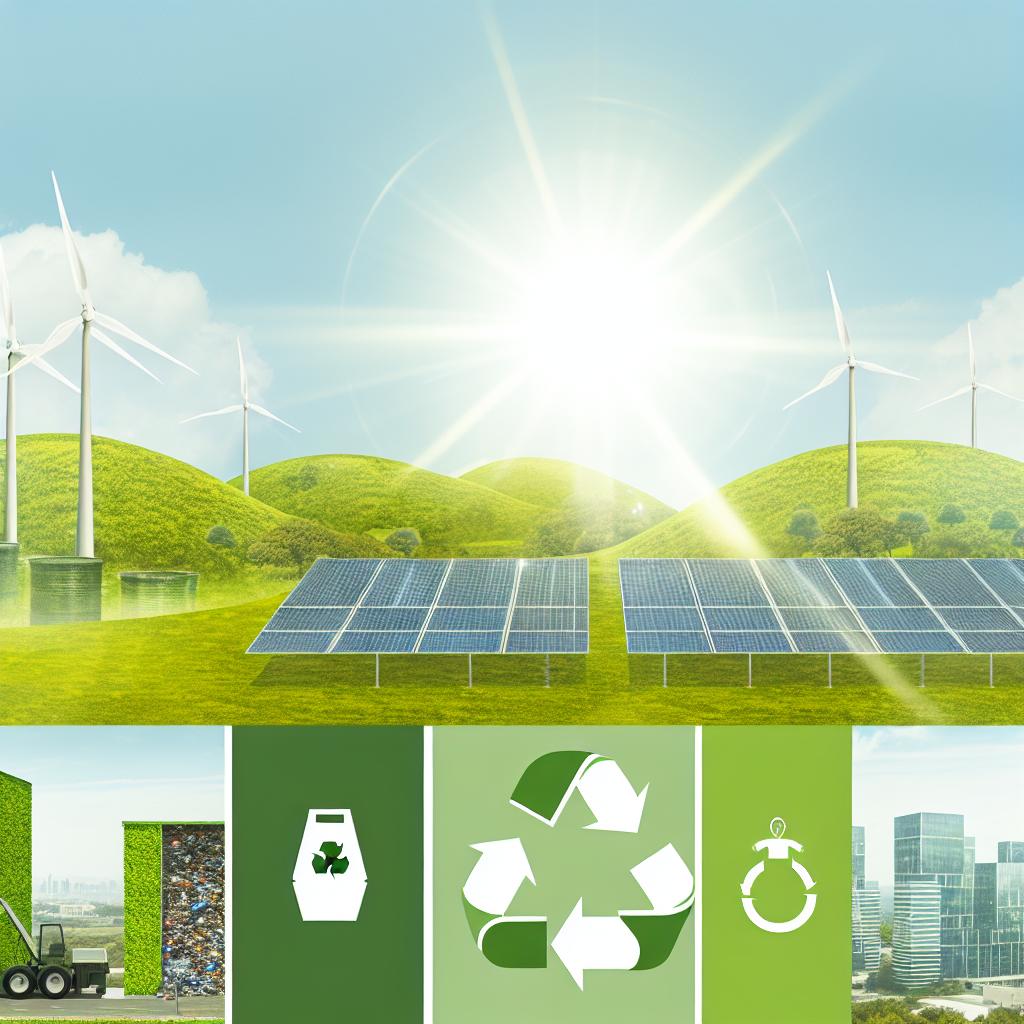
Introduction to Green Technology
Green technology, also known as sustainable technology, has emerged as an essential solution in addressing some of the pressing environmental issues our world faces today. The essence of green technology is embedded in its ability to reduce energy waste by incorporating efficient methods and relying on renewable, sustainable resources. As global challenges such as climate change, pollution, and resource depletion become more pronounced, the adoption and advancement of green technology have become increasingly vital.
This document delves into various crucial aspects of green technology, from renewable energy sources to innovative energy-efficient solutions and their impactful integration in construction and architecture.
The Role of Renewable Energy Sources
Central to the concept of green technology are renewable energy sources such as solar, wind, and hydroelectric power. These are sustainable alternatives that play a significant role in diminishing the environmental degradation caused by fossil fuels. Fossil fuels have been a leading cause of harmful emissions, contributing heavily to global warming and air pollution. Conversely, renewable energy sources harness natural processes that are continuously replenished, making them a cleaner and more sustainable choice.
For instance, solar panels capture photovoltaic energy from sunlight and convert it into electricity. This process does not produce greenhouse gases during operation, thereby offering a cleaner energy production method. Likewise, wind energy, harvested through turbines, provides electricity by transforming the kinetic energy from the wind into mechanical power. As a result, reliance on non-renewable resources like coal and gas is considerably minimized, curbing both air pollution and the dependency on finite resources.
Moreover, hydroelectric power utilizes the gravitational pull of flowing water to generate electricity, thus exemplifying another sustainable approach to energy production. By focusing on these renewable sources, green technology fosters energy systems that align with environmental sustainability and conservation principles.
For further exploration into renewable energy, the U.S. Department of Energy’s Office of Energy Efficiency & Renewable Energy serves as a valuable resource.
Advanced Energy-Efficient Technologies
Beyond renewable energy, green technology encompasses a wide array of energy-efficient innovations that aim to optimize energy utilization while minimizing waste. The introduction of energy-efficient appliances and systems is a hallmark of this progress, promising enhanced performance alongside reduced energy consumption.
Consider LED lighting, which stands out as a breakthrough in efficient lighting. Compared to traditional incandescent bulbs, LEDs require significantly less electricity and boast a longer lifespan, resulting in reduced energy demand and less frequent replacements. This translates to tangible reductions in energy bills and resource usage over time.
Additionally, the advent of smart home technologies such as thermostats and energy management systems has revolutionized how energy usage is monitored and regulated. These devices enable homeowners and businesses to track and control energy consumption actively, adapting usage patterns to optimize efficiency and limit waste. The implementation of these technologies contributes substantially to overall energy savings and the reduction of carbon footprints.
Energy Storage Solutions
A pivotal aspect of reducing energy waste and enhancing the viability of renewable energy systems lies in effective energy storage. Energy storage technologies have witnessed significant advancements, notably through the development of modern battery solutions. Lithium-ion and solid-state batteries exemplify these advancements, offering improved storage capabilities that are essential for balancing supply and demand efficiently.
In the realm of renewable energy, storage solutions ensure that surplus energy generated, especially during periods of high production, is retained and made available when needed. This is crucial in addressing the intermittency challenge associated with renewable energy sources, such as the availability of sunlight and wind, and it enhances the reliability and resilience of energy systems.
The continuous improvement of energy storage capacities promises greater integration of renewables into our energy mix, thereby minimizing waste and advancing towards a cleaner energy future. To explore more about sophisticated energy storage solutions, consider visiting the Office of Electricity.
The Impact of Green Buildings
The construction sector is another domain where green technology exerts substantial influence, particularly through the concept of green buildings. These constructions prioritize sustainability, integrating various energy-efficient elements and sustainable materials to curtail energy consumption right from the inception.
Green buildings often employ cutting-edge technologies like energy-efficient heating and cooling systems, which are designed to consume less energy while providing the same level of comfort and utility. Enhanced insulation materials are used to maintain indoor temperatures, reducing reliance on artificial heating and cooling devices, and thus conserving energy over time.
Moreover, by utilizing innovative design principles such as passive solar design, buildings can harness natural lighting and maintain natural ventilation, further minimizing dependency on electricity. This approach not only caters to energy efficiency but also assures a reduction in the carbon footprint, promoting sustainability in urban development.
Conclusion
In conclusion, green technology stands as a cornerstone in the global endeavor to decrease energy waste and its associated environmental impacts. The myriad advancements in renewable energy, energy-efficient technologies, and sustainable construction illustrate the dynamic potential of green technology in steering us towards a sustainable future. By embracing and advancing these technologies, not only can we ensure energy conservation but also foster an ecologically balanced and resilient planet, safeguarding the well-being of future generations. As such, the role of green technology cannot be overstated in the context of contemporary and future environmental stewardship.